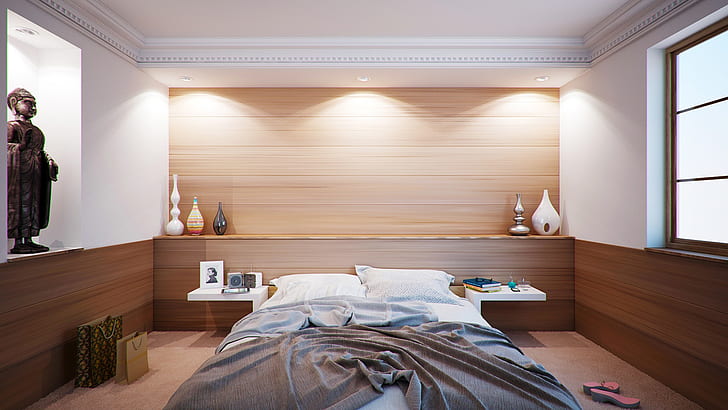Neuroaesthetic Design: Crafting Spaces that Speak to the Brain
The intersection of neuroscience and interior design is giving birth to a revolutionary approach in home styling. Neuroaesthetic design, a cutting-edge concept, is reshaping how we create living spaces by tapping into the brain's response to visual stimuli. This innovative method promises to transform our homes into havens that not only please the eye but also nurture our cognitive well-being.

The Science Behind Beauty
Neuroaesthetics, a term coined in the late 1990s, explores how our brains perceive and respond to beauty. This field of study has since expanded beyond art appreciation to encompass architecture and interior design. Researchers have discovered that certain visual elements can trigger specific neurological responses, influencing our emotions, productivity, and overall well-being.
Studies using functional magnetic resonance imaging (fMRI) have shown that when we view aesthetically pleasing environments, our brain’s reward centers light up. This suggests that beauty is not just in the eye of the beholder, but is a measurable neurological experience. By understanding these neural mechanisms, designers can create spaces that are not only visually appealing but also psychologically beneficial.
The Elements of Neuroaesthetic Design
Implementing neuroaesthetic principles in home design involves careful consideration of several key elements. Color psychology plays a crucial role, with different hues affecting mood and cognitive function. For instance, blue tones have been found to enhance creativity, while warm oranges and reds can stimulate conversation and social interaction.
Spatial arrangements also significantly impact our neural responses. Open floor plans can reduce stress by increasing the sense of freedom and possibility, while strategically placed cozy nooks can provide a sense of security and comfort. The concept of prospect and refuge, derived from evolutionary psychology, suggests that humans feel most at ease in spaces that offer both open views (prospect) and areas of retreat (refuge).
Lighting: The Neural Dimmer Switch
Lighting is perhaps one of the most powerful tools in neuroaesthetic design. Natural light has been shown to regulate our circadian rhythms, improve mood, and boost vitamin D production. However, the strategic use of artificial lighting can also have profound effects on our cognitive function and emotional state.
Designers are now incorporating tunable LED lighting systems that mimic the natural progression of daylight. These systems can be programmed to shift from cool, energizing tones in the morning to warmer, relaxing hues in the evening, aligning with our body’s natural rhythms and potentially improving sleep quality and overall well-being.
Texture and Touch: The Tactile Connection
While visual elements are crucial in neuroaesthetic design, the importance of tactile sensations should not be underestimated. Our brains process touch information through the somatosensory cortex, which can influence our perception of comfort and safety within a space.
Incorporating a variety of textures in home design can create a rich sensory experience. Plush fabrics, smooth surfaces, and natural materials like wood or stone can engage our tactile senses, promoting a feeling of grounding and connection to our environment. This multisensory approach to design aligns with our brain’s preference for diverse stimuli, potentially enhancing our overall experience of a space.
Biomorphic Forms and Fractals
Nature has long been recognized for its restorative properties, and neuroaesthetic design takes cues from the natural world. Biomorphic forms – shapes and patterns that mimic those found in nature – have been shown to reduce stress and improve cognitive function. Incorporating these organic shapes into furniture design, architectural elements, or decorative objects can subconsciously connect us to the calming influence of nature.
Fractals, self-similar patterns that repeat at different scales, are ubiquitous in nature and have a particular appeal to our visual processing systems. Studies have found that exposure to fractal patterns can induce a state of relaxation and improve focus. Integrating fractal-inspired artwork, textiles, or even wallpapers can create visually engaging spaces that support cognitive well-being.
The Future of Home Design
As neuroaesthetic principles gain traction in the design world, we can expect to see a shift towards more personalized and adaptive living spaces. Emerging technologies like biosensors and artificial intelligence may soon allow our homes to respond in real-time to our physiological and emotional states, adjusting lighting, temperature, and even scent to optimize our well-being.
The integration of virtual and augmented reality in home design also holds exciting possibilities for neuroaesthetics. These technologies could allow us to experiment with different design elements and their potential neural impacts before making physical changes to our spaces.
Challenges and Considerations
While neuroaesthetic design offers compelling possibilities for enhancing our living environments, it’s important to approach this field with a critical eye. Individual differences in perception and cultural variations in aesthetic preferences must be taken into account. What stimulates one person’s brain positively may not have the same effect on another.
Moreover, as with any emerging field, more research is needed to fully understand the long-term effects of neuroaesthetic design principles on human behavior and well-being. Ethical considerations, such as the potential for manipulation of emotional states through design, also need to be carefully addressed.
Embracing the Neuroaesthetic Revolution
Neuroaesthetic design represents a fascinating convergence of art, science, and technology in the realm of home styling. By understanding and applying principles that resonate with our neural architecture, we have the opportunity to create living spaces that not only look beautiful but actively contribute to our cognitive health and emotional well-being.
As we continue to unravel the mysteries of the brain, our homes may evolve into dynamic environments that nurture our minds as much as they shelter our bodies. The future of interior design lies not just in aesthetics, but in creating spaces that truly speak to our brains, fostering creativity, relaxation, and overall quality of life.





